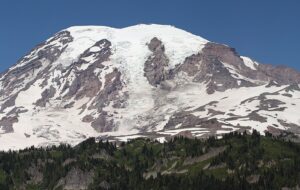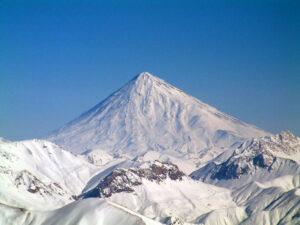A quartet of geophysicists and hydrobiologists has obtained a permit to dive beyond the 30-metre mark of Lake Cheko in Siberia. Their research, slated to begin in late February, will focus on the cataclysmic Tunguska event. It will be the deepest expedition ever conducted at the site.
Using lakebed samples, the team aims to answer a century-old question posed by the leader of the first Tunguska research expedition, mineralogist Leonid Kulik. His question was this: If a meteorite caused the explosion, where is the epicenter of its crater and the extraterrestrial matter from it?

Lake Cheko in Siberia, Russia, close to the epicenter of the Tunguska event. Photo: Tungussky Nature Reserve
The Tunguska event and conflicting research
In July 1908, a meteoroid measuring 50-60 metres in diameter plunged through the atmosphere above the Siberian taiga, catalyzing the 12-megaton Tunguska explosion. Experts estimate that the blast decimated some 80 million trees and dispatched at least three human beings. It is Earth’s largest impact event on record, but scientists have yet to locate its crater.
Some believe the blast was caused by a mid-air explosion. Others think it was caused by hard impact. In 2012, an Italian research team found evidence that pointed to a small 500m crater in Lake Cheko as the point of impact. The study was hotly contested because that crater is located some eight kilometres from the Tunguska event’s supposed epicenter.
The Italian group collected seismic measurements of the crater’s bottom, which showed about 100 years’ worth of accumulated sediment. And Lake Cheko’s bed — which is shaped like a crater — was deeper than is typical for the region. Dense stony substrate beneath the sediment was likely the remains of the exploded meteoroid, they concluded.
In 2017, a Russian team contested those findings. Core samples drawn by the Russians seemed to indicate that the lake bed was nearly 200 years older than the Tunguska event. Geologically young, but not young enough to be the epicenter.

The epicenter of the Tunguska event, c.1908. Photo: Tungussky Nature Reserve, Russian Geographic Society
Tunguska research expedition, 2022
Lake Cheko bottoms out at 54m and resides in the Tungussky Nature Reserve, a rural stretch in central Siberia’s Krasnoyarsk region. This winter expedition will start a cycle of long-term research there.
“The team of researchers aim to study how thick the lake bottom’s sediments are, and take primary samples,” reserve inspector Evgenia Karnoukhova told The Siberian Times. “The data they’ll gather will be analyzed and passed on to geologists. We are not speaking about the search for any celestial body at this stage.”

Collapsed trees close to the epicenter of the Tunguska event. Explorer Leonid Kulik, leader of the first scientific expedition to the site, took the photo.






